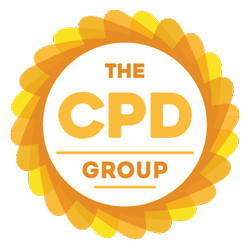Welcome to the Future of Dentistry! We're excited to have you at our Dentistry and Dental Science Webinar on May 20, 2025, where we delve into ground-breaking innovations, scientific advancements, and transformative techniques shaping modern dental care. Join leading experts as they share cutting-edge research, clinical insights, and strategies to enhance patient care and practice efficiency. Whether you're a dental professional, researcher, or industry enthusiast, this session promises to expand your knowledge and inspire new possibilities. Let's explore the future of dentistry together-one breakthrough at a time!


Join us on May 20, 2025, for the Dentistry and Dental Science Webinar, where leading dental professionals, researchers, and healthcare experts will explore the latest advancements in dental science, clinical practice, and emerging technologies. This event will cover preventive care strategies, modern diagnostic and treatment approaches, and the link between oral health and systemic conditions like diabetes and heart disease. Attendees will gain insights into breakthrough innovations in dental materials, regenerative dentistry, and digital dentistry, along with best practices for enhancing patient care. Featuring live Q&A sessions, expert panel discussions, and interactive presentations, this webinar offers a valuable platform for knowledge exchange and professional growth, making it an essential event for dentists, researchers, students, and industry professionals looking to stay at the forefront of dental science and practice.
3D printing and bioprinting are revolutionizing modern dentistry by enabling faster, more precise, and personalized dental treatments. These technologies utilize digital workflows to fabricate high-quality dental restorations, implants, surgical guides, and even biocompatible tissues.
Smart and digital implants in dentistry are transforming the way dental procedures are performed, offering significant advancements in precision, patient comfort, and treatment outcomes. These innovative technologies integrate cutting-edge digital tools, artificial intelligence (AI), and smart materials to enhance the entire dental implant process-from planning to placement and monitoring.
Salivary diagnostics and oral microbiome research are emerging as critical areas in modern dentistry and health care, offering innovative ways to detect, monitor, and treat various diseases through the analysis of saliva and the bacteria that inhabit the mouth. These fields are gaining traction as they provide non-invasive, cost-effective, and early diagnostic tools that can revolutionize oral and systemic health management.
Laser and photodynamic therapy (PDT) are rapidly gaining traction in modern dentistry due to their precision, effectiveness, and minimally invasive nature. These advanced technologies are transforming how dental professionals approach a wide range of treatments, offering patients more comfortable, efficient, and less painful alternatives to traditional procedures.
Nanotechnology is making significant strides in dentistry, offering ground-breaking solutions that enhance the precision, durability, and effectiveness of dental treatments. By manipulating materials at the nanoscale, dental professionals are able to develop more advanced tools, treatments, and materials that provide patients with longer-lasting, less invasive, and more comfortable dental care.
Biomimetic dentistry is a rapidly growing field that focuses on replicating the natural structure, function, and appearance of teeth. This approach emphasizes the use of advanced materials and techniques that mimic the natural properties of teeth, promoting better long-term outcomes, durability, and aesthetic results. Biomimetic dentistry is gaining traction because it prioritizes minimal invasiveness, patient-centered care, and sustainability, offering significant improvements in how dental restorations are made and how tooth damage is repaired.
Cone Beam Computed Tomography (CBCT) is revolutionizing the field of dentistry by providing highly detailed 3D imaging that enhances diagnostics, treatment planning, and precision in various dental procedures. Unlike traditional 2D X-rays, CBCT offers a more comprehensive view of the oral and maxillofacial regions, making it an indispensable tool for a wide range of dental specialties. CBCT's ability to capture high-resolution images with reduced radiation exposure has made it an essential technology in modern dental care.
Dental ergonomics is an emerging trend in dentistry that focuses on optimizing the work environment and workflow to improve the comfort, efficiency, and health of dental professionals while ensuring high-quality patient care. The nature of dental practice requires long hours of precise, repetitive work in awkward positions, which can lead to musculoskeletal disorders (MSDs) and fatigue. By adopting ergonomic principles, dentists and dental staff can reduce the risk of injury, enhance productivity, and improve overall well-being, all while delivering better care to patients.
Antimicrobial resistance (AMR) in dentistry is a rapidly emerging concern that is reshaping how dental professionals approach the use of antibiotics and antimicrobial treatments. AMR occurs when microorganisms (such as bacteria, fungi, and viruses) evolve to become resistant to the drugs that once killed them or inhibited their growth. In dentistry, this resistance poses a significant threat to the treatment of oral infections, periodontal diseases, and post-surgical complications. As the overuse and misuse of antibiotics in dental practice continue, the spread of resistant pathogens could complicate routine procedures and increase the risk of treatment failures.
Dental sleep medicine (DSM) is a rapidly growing field that focuses on the diagnosis, treatment, and management of sleep disorders, particularly obstructive sleep apnea (OSA) and snoring, through dental interventions. With the increasing awareness of the impact of sleep disorders on overall health, more dental professionals are integrating sleep medicine into their practices to offer patients non-invasive, effective solutions. DSM utilizes oral appliances, therapy, and collaborative care to help manage sleep-related conditions, complementing traditional treatments like continuous positive airway pressure (CPAP) therapy for sleep apnea.
Teleorthodontics, a subset of tele dentistry, is an innovative approach to orthodontic care that leverages digital technology and remote communication to provide patients with convenient, efficient, and effective orthodontic treatments from a distance. This trend is gaining momentum as it allows patients to receive consultations, progress monitoring, and adjustments without the need for frequent in-office visits. Through virtual consultations, remote monitoring devices, and digital treatment plans, teleorthodontics is making orthodontic care more accessible, especially for those with busy schedules or living in underserved areas.
Periodontology (Gum Health) is a crucial field of dentistry that focuses on the study, prevention, and treatment of periodontal diseases, which affect the gums and other supporting structures of the teeth. As awareness of the link between oral health and overall health increases, there is a growing emphasis on gum health as a critical aspect of general well-being. Gum diseases, such as gingivitis and periodontitis, are common but can lead to severe complications if left untreated, including tooth loss and systemic health issues like heart disease, diabetes, and respiratory problems.
Cosmetic dentistry is evolving with new trends that prioritize aesthetics, functionality, and minimally invasive techniques. In 2025, the focus is on natural-looking enhancements, digital smile design (DSD), and biocompatible materials that improve both appearance and oral health.
Restorative dentistry is advancing with a focus on durability, aesthetics, and minimally invasive procedures. The latest trends emphasize biocompatibility, digital technology, and long-lasting materials to restore function while enhancing natural beauty.
Oral and maxillofacial surgery (OMS) is rapidly evolving with advancements in technology, minimally invasive techniques, and regenerative medicine. The focus is on precision, faster healing, and improved patient outcomes through digital planning and biologically enhanced treatments.

Our webinars are thoughtfully designed to deliver value to a wide range of individuals. Whether you're looking to grow your skills, explore new opportunities or gain insights from experts, here's who will benefit most from attending:

In a world where knowledge is power, webinars have emerged as one of the most accessible and impactful ways to learn, grow and connect. Don't miss the chance to learn, grow and connect in ways that truly matter.

Registering for a webinar is essential to gain access to the unique opportunities and secure a chance to grow, connect and gain insights that can drive your personal and professional success. Webinars are more than just online meetings, they're gateways to knowledge, innovation, and growth.

The global dentistry and dental science market is experiencing steady growth, driven by increasing oral health awareness, technological advancements, and an aging population. Valued at approximately $40-45 billion and expected to grow at a CAGR of 6-8% from 2024 to 2032, the market spans preventive care, restorative dentistry, cosmetic procedures, implantology, and dental equipment. North America leads due to high healthcare spending, while Asia-Pacific is the fastest-growing region. Key drivers include rising awareness, government initiatives, and innovations such as 3D printing, AI-powered diagnostics, and tele dentistry, along with growing demand for cosmetic dentistry and expanded dental insurance coverage. However, challenges like high treatment costs, a shortage of skilled dentists, regulatory barriers, and economic fluctuations persist. Emerging markets, dental tourism, and advancements in AI-driven diagnostics, robotics, and sustainable materials present significant opportunities. Major industry players include Dentsply Sirona, Align Technology, 3M Oral Care, Danaher Corporation, and Straumann Group, among others. The future of dentistry will be shaped by AI, robotics, 3D printing, minimally invasive procedures, and personalized treatments, with strong potential for continued expansion through digital transformation and government-backed healthcare initiatives.